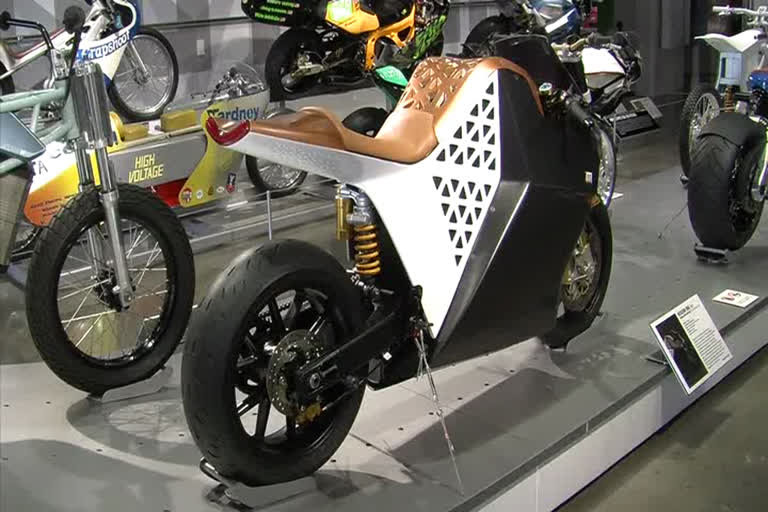Los Angeles: The first electric motorcycle exhibition has debuted in Los Angeles. Many of its exhibits are an attempt to breathe life into a struggling motorcycle industry amidst an electric transport revolution.
The Chrome Moto Undone, a motorcycle prototype considered by many in the industry as an object of worship rather than just a vehicle is on display at the world's first exclusively electric motorcycle exhibition "Electric Revolution".
The exhibition has debuted at the Petersen Automotive Museum in Los Angeles, California. It explores the history and current state of the e-bike industry. The exhibit runs until November 2019.
The show features 21 groundbreaking bikes from visionary custom builders and established manufacturers. It's a mix of custom e-motorcycles, racing bikes, prototypes, and those that are, will be or could be in production.
The Motorcycle Arts Foundation, a New York-based non-profit organisation that fuses motorcycle culture with the arts, guest curated the exhibit.
Harley Davidson underwrote it and provided three prototypes from its EV program including the highly anticipated 2020 LiveWire. The 2020 LiveWire goes on sale for urban use this fall at a cost of 29-thousand US dollars and speed of 100 miles per hour.
John Lewis, the spokesperson of the Motorcycle Arts Foundation, says a lot is riding on the launch of LiveWire because all other motorcycle companies will be watching to see whether they should follow suit and expand their electric sites themselves if sales go well.
Read more:US, Chinese negotiators resume trade talks
Lewis says all motorcycle sales are currently flat so the Harley-Davidson launch has to be a success to breathe life into the industry again and dictate the direction of the industry and the e-industry.
He says Harley Davidson will then be the only manufacturer selling a full-size electric street bike, making it a leader in the electric urban mobility movement.
Many experts agree that the transportation industry is amidst an electric revolution and e-bikes represent the future.
Michael Bodell, Deputy Director of Petersen Automotive Museum, says this exhibition is about where the e-bike industry has been and where it could be going.
Also on display is Kalk by CAKE, Sweden's innovative, light and stylish off-road e-bike with a high-tech vibe. Kalk sold out on its first run and has won design awards around the world. Minimalism, such as this, is the desired movement for the e-bike industry today.
FX SuperMoto 2019 by Huge Design of San Francisco built upon the frame created by Zero Motorcycles, a company many say is the one to watch in the e-bike market. Tarform 2019 by Tarform of New York City was 3D printed from biodegradable plastic.
Amongst the racing e-bikes, Crapshoot, designed by the now-closed Alta Motors is a very fast e-bike with a top speed of 120 mph and is the only one in existence.
Omega Racer 2009 by Kent Riches of California, goes 203 mph and holds the first credited land speed world record for an electric motorcycle along with 8 other records.
When it comes to the fastest electric motorcycle in the world in production, the LS - 218 2019 built by Lightning Motorcycles of San Jose, California reaches speeds of 218 mph. The top historic e-motorcycle goes to Quicksilver 1973, built by Mike Corbin of Hollister, California. It uses sliver-zinc batteries from a nuclear submarine.
Jessie Gentry, writer and photographer for RideApart online magazine and Motorcyclist online says this exhibition is monumental because it's the first big grouping of e-bikes in the same space ever on display.



